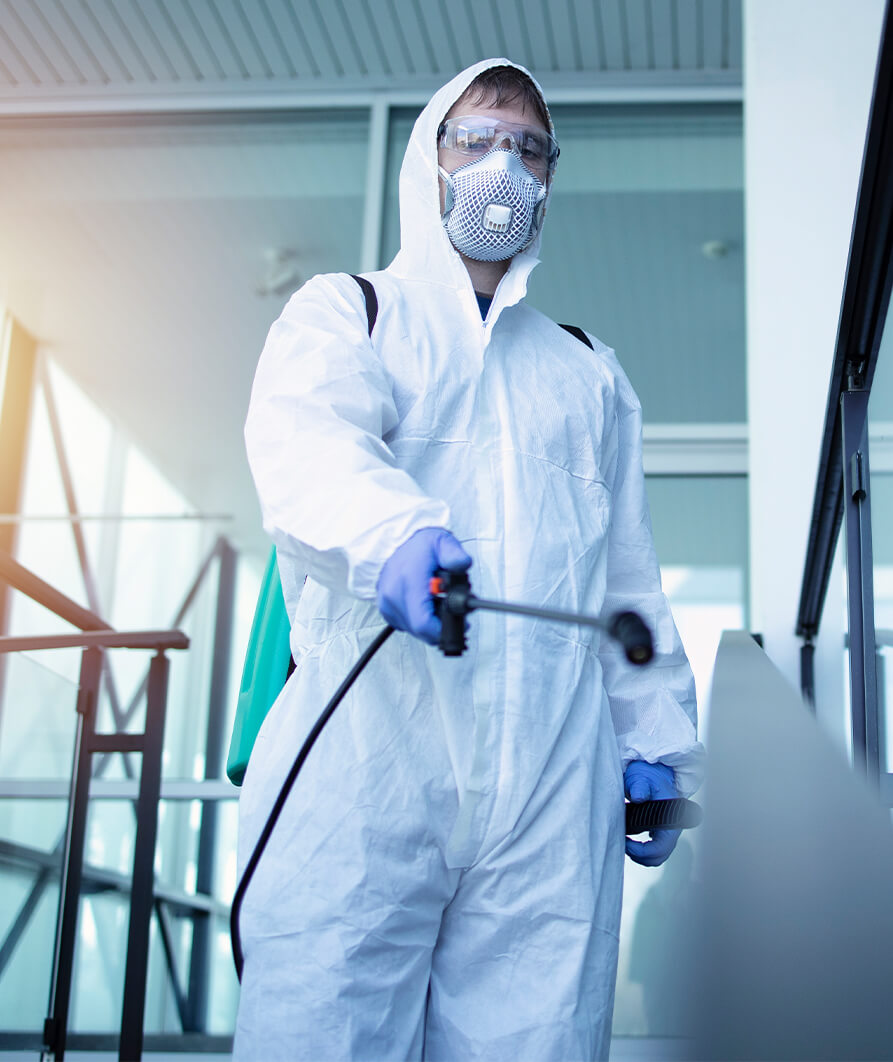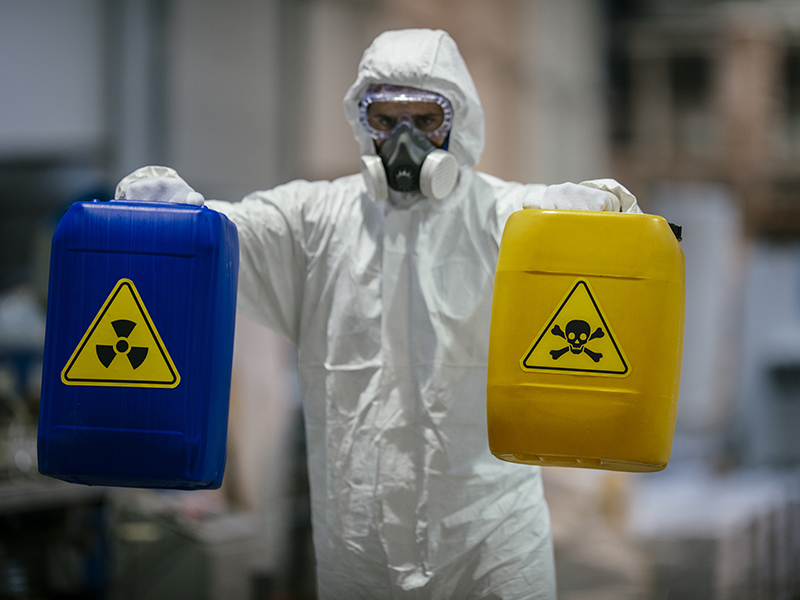Expert Blood Cleanup: Making Sure Safe and Thorough Decontamination
Expert Blood Cleanup: Making Sure Safe and Thorough Decontamination
Blog Article
Expert Biohazard Cleaning and Decontamination for Blood, Bodily Fluids, and Hazardous Materials
In the world of biohazard cleaning and decontamination for blood, physical fluids, and dangerous materials, precision and expertise are critical. The prospective health and wellness risks connected with direct exposure to biohazards highlight the vital need for precise handling and thorough cleaning. Specialized training outfits specialists with the expertise and skills necessary to resolve these hazardous situations effectively. Nonetheless, it is not simply about cleaning up; the value of using proper purification strategies can not be overemphasized. As we browse the elaborate landscape of biohazard clean-up, understanding the subtleties of regulations, conformity, and the specialized tools at play becomes crucial in guaranteeing a safe and extensive decontamination procedure.
Wellness Dangers of Biohazard Exposure
Direct exposure to biohazards postures significant health threats that can lead to extreme effects for neighborhoods and people alike. Biohazards incorporate a vast array of biological materials, consisting of blood, bodily liquids, mold and mildew, bacteria, viruses, and various other possibly contagious products. When individuals come into contact with these biohazards, whether via crashes, improper handling, or ecological direct exposure, they face the risk of having severe diseases or conditions.
Among the main health and wellness risks related to biohazard exposure is the transmission of contagious illness. Bloodborne pathogens such as HIV, hepatitis B and C, and different germs can be existing in biohazardous materials, positioning a direct risk to human wellness. Inhaling air-borne biohazards like mold spores or entering into contact with polluted surfaces can likewise lead to breathing concerns, allergic reactions, and other negative health effects.
Furthermore, biohazard exposure can have long-term health effects, with some conditions showing up years after the first call (Blood Cleanup). Consequently, it is important to focus on proper biohazard cleaning and decontamination to alleviate these health dangers and ensure the security of individuals and areas

Specialized Educating for Biohazard Cleaning
When it concerns taking care of biohazard cleanup successfully and securely, specialized training plays an essential function in guaranteeing correct purification treatments are followed. Biohazard clean-up requires details expertise and skills to effectively mitigate threats connected with bloodborne microorganisms, bodily liquids, and hazardous products. Experts learnt biohazard cleanup undergo strenuous direction on just how to safely take care of, get rid of, and deal with biohazardous products to avoid contamination and direct exposure.
Specialized training for biohazard clean-up covers a series of vital topics, consisting of proper individual safety equipment (PPE) usage, bloodborne virus recognition, decontamination methods, and contaminated materials disposal methods. Individuals learnt biohazard cleanup are outfitted with the needed know-how to assess contamination levels, identify prospective threats, and carry out appropriate cleanup procedures in conformity with governing criteria.
Continual training and education and learning are vital in the field of biohazard cleaning to remain upgraded on the latest purification modern technologies, safety protocols, and policies. By investing in specialized training, biohazard clean-up experts can effectively reply to emergency clean-up situations and protect both public health and the setting.
Significance of Proper Purification Methods
Using appropriate decontamination techniques is vital in biohazard cleanup to successfully lessen and get rid of unsafe materials health and wellness threats. Efficient decontamination not just makes certain the elimination of noticeable traces of blood, bodily fluids, and other biohazards but likewise directory targets invisible virus that might posture significant health risks if not effectively removed. By complying with strict decontamination methods, educated professionals can significantly lower the danger of exposure to dangerous microbes, infections, and germs that can bring about infections or illness.
Correct purification techniques entail using specialized devices and disinfectants that are specifically developed to reduce the effects of biohazards properly. Complete cleansing and disinfection of contaminated locations are necessary to avoid the spread of microorganisms and guarantee a secure setting for passengers. Furthermore, the correct disposal of biohazardous waste following purification treatments is essential in stopping contamination of various other surfaces or individuals.

Tools and Devices for Safe Clean-up
When dealing with blood, bodily liquids, or dangerous products, biohazard cleaning specialists depend on specialized equipment to lessen exposure dangers and extensively sanitize the afflicted area. Additionally, biohazard cleansing packages having anti-bacterials, absorbing materials, and biohazard bags are made use of to safely consist of and get rid of of contaminated things.
Advanced cleaning tools like hospital-grade anti-bacterials, HEPA-filtered vacuum cleaners, and misting makers are employed to disinfect surfaces and remove biohazards efficiently. Specialized equipment such as sharps containers and biohazard garbage disposal bins are utilized to securely manage sharp items and biohazardous waste products. By utilizing the appropriate tools and devices, biohazard cleaning professionals can make sure a complete cleaning procedure that focuses on safety and security and lessens health and wellness threats for both workers and occupants of the affected room.
Laws and Compliance in Biohazard Cleaning
Correct adherence to regulations and compliance criteria is critical in biohazard cleansing to make certain the safety and security of both employees and the setting. Government firms such as OSHA (Occupational Security site and Health And Wellness Administration) and the EPA (Environmental Protection Agency) have established certain standards for biohazard cleaning procedures to lessen health and wellness threats and ecological contamination. These guidelines cover an array of aspects consisting of the handling, transport, and disposal of biohazardous products, in addition to the necessary training and safety devices required for personnel included in the cleanup procedure.
Biohazard cleaning business have to remain current with these guidelines to assure that their procedures satisfy the needed security standards. Failure to abide by these guidelines can cause severe consequences, including fines, legal activity, and endangering the health of individuals and the setting. By following rigid policies and conformity actions, biohazard cleaning companies can efficiently mitigate dangers and make sure a complete and risk-free cleanup process for all events included.
Final Thought
To conclude, biohazard cleansing and purification require customized training, correct methods, and adherence to policies. Direct exposure to blood, physical liquids, and harmful materials poses significant health and wellness threats, making it critical to utilize the ideal equipment and tools for safe cleaning. By following stringent methods and guidelines, professionals can effectively minimize the dangers related to biohazard exposure next and make sure the security of both themselves and others.
As we browse the detailed landscape of biohazard cleaning, recognizing the subtleties of guidelines, compliance, and the customized devices at play ends up being vital in making certain a risk-free and comprehensive decontamination process. (Blood Cleanup)
When it comes to taking care of biohazard clean-up effectively and safely, specialized training plays an essential function in guaranteeing appropriate decontamination procedures are complied with.Utilizing proper purification methods is important in biohazard cleanup to efficiently decrease and eliminate unsafe materials health dangers. Furthermore, biohazard cleaning sets consisting of anti-bacterials, absorptive materials, and biohazard bags are used to safely dispose and contain of contaminated items.
Federal government companies such as OSHA (Occupational Safety and Health Administration) and the EPA (Environmental Protection Company) have actually established specific guidelines for biohazard clean-up treatments to reduce health and wellness threats and ecological contamination.
Report this page